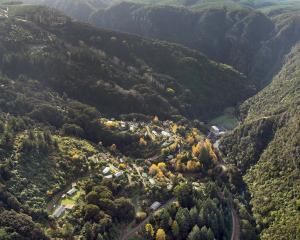A strategy aimed at reducing the flood risk in Milton while encouraging the area's growth has been adopted by the Clutha District Council (CDC) and the Otago Regional Council (ORC).
The two councils launched their draft Milton 2060 flood risk management strategy in April. It was developed from a joint working party created in 2007 to study flooding in the area.
Milton has a history of flooding dating back to European settlement in the 1850s. Most recently, extensive flooding occurred in 2006, 2007 and 2010.
During flooding in late July 2007, more than 100 residential properties were affected and about 46 people were evacuated from their homes.
The strategy identifies areas prone to flooding, separating them into four main areas: the Tokomairiro River flood plain, low-lying ponding areas, the Milton urban area, and rural and semi-rural areas on the Tokomairiro Plain.
The Tokomairiro River floodplain can be covered by up to 2m of water during flooding, usually lasting 24-36 hours.
The strategy suggests creating more defined escape pathways to control activities that could restrict safe access during floods, and advises particular roads be managed by the relevant roading authorities as identified escape and access routes.
It also advises avoiding additional flood risks and reducing existing flood risks through land-use controls, and ensuring there is efficient drainage.
The policy was adopted by the CDC at its meeting on Thursday, and by the ORC on Wednesday.
Now the strategy has been adopted, the district council will work with the New Zealand Transport Agency, KiwiRail and the ORC to protect structures and residents' properties, and reduce the impact on state highways and the main trunk railway.
At its meeting on Thursday, the Clutha District Council also approved amendments to its existing freedom camping bylaw, as recommended by the regulatory services committee.
The bylaw prohibits freedom camping in any towns or townships in the district.







